Design and Experimental Research of a Miniature Digital Hydraulic Valve
Abstract
:1. Introduction
2. Design of the Valve
3. The Mathematical Model of the Valve
3.1. Electromagnetic Subsystem
3.2. Mechanical Subsystem
3.3. Fluid Subsystem
3.4. Chamber Dynamic Pressure Subsystem
3.5. Research on Switching Characteristics
4. Experimental Study on the Micro Digital Valve
4.1. Test System
4.2. Static Characteristic Test of the Miniature Digital Valve
5. Conclusions
- (1)
- The mathematical modeling of the four subsystems of the valve is developed, by which the switching characteristics of the valve are analyzed theoretically. The signal–displacement relation is divided into five stages.
- (2)
- A test system for testing the micro digital valve is designed, and the new micro valve test is carried out. The signal–flow curve is similar to the signal–displacement curve. It can also be divided into five stages to verify the correctness of switch characteristics.
- (3)
- The accuracy of the mathematical model is verified by comparing the signal flow characteristic curves with the simulation results. The flow rate increases with the increase of duty cycle and input voltage.
Author Contributions
Acknowledgments
Conflicts of Interest
References
- Siivonen, L.; Linjama, M.; Huova, M.; Vilenius, M. Jammed On/Off Valve Fault Compensation with Distributed Digital Valve System. Int. J. Fluid Power 2009, 10, 73–82. [Google Scholar] [CrossRef]
- Huova, M.; Karvonen, M.; Ahola, V.; Linjama, M.; Vilenius, M. Energy Efficient Control of Multiactuator Digital Hydraulic Mobile Machine. In Proceedings of the Seventh International Conference of Fluid Power, Aachen, Germany, 22–24 March 2010. [Google Scholar]
- Linjama, M.; Vilenius, M. Inproved Digital Hydraulic Tracking Control of Water Hydraulic Cylinder Drive. Int. J. Fluid Power 2005, 6, 29–39. [Google Scholar] [CrossRef]
- Uusitalo, J.P.; Lauttamus, T.; Linjama, M. Miniaturized bistable seat valve. In Proceedings of the Tenth Scandinavian International Conference on Fluid Power, Tampere, Finland, 21–23 May 2007. [Google Scholar]
- Uusitalo, J.P.; Aholaa, V.; Soederlund, L. Novel Bistable Hammer Valve for Digital Hydraulics. Int. J. Fluid Power 2010, 11, 35–44. [Google Scholar] [CrossRef]
- Uusitalo, J.P. A Novel Digital Hydraulic Valve Package: A Fast and Small Multiphysis Design; Tampere University of Technology: Tampere, Finland, 2010. [Google Scholar]
- Jansen, J.F.; Love, L.J.; Lind, R.F.; Richardson, B.S. Mesofluidic Two Stage Digital Valve. U.S. Patent 8616237, 31 December 2013. [Google Scholar]
- Love, L.J.; Lind, R.F.; Jansen, J.F. Mesofluidic Actuation for Articulated Finger and Hand Prosthetics. In Proceedings of the 2009 IEEE/RSJ International Conference on Intelligent Robots and Systems, St. Louis, MO, USA, 11–15 October 2009; pp. 2586–2591. [Google Scholar]
- Tautenhahn, R.; Dreher, T.; Weber, J.; Fuchs, M. Novel piezoelectrical drive mechanism for small valves. In Proceedings of the 8th International Fluid Power Conference, Dresden, Germany, 26–28 March 2012; Volume 3, pp. 473–486. [Google Scholar]
- Karvonen, M.; Juhola, M.; Ahola, V. A Miniature Needle Valve. In Proceedings of the Third Workshop on Digital Fluid Power, Tampere, Finland, 13–14 October 2010; pp. 61–78. [Google Scholar]
- Mikkola, J.; Ahola, V.; Lauttamus, T. Improving characteristics of on/off solenoid valves. In Proceedings of the Tenth Scandinavian International Conference on Fluid Power (SICFP’07), Tampere, Finland, 21–23 May 2007. [Google Scholar]
- Karvonen, M.; Ketonen, M.; Linjama, M. Recent advancements in miniature valve development. In Proceedings of the Fourth Workshop on Digital Fluid Power, Linz, Austria, 21–22 November 2011; pp. 90–103. [Google Scholar]
- Puumala, V. Nopea Neuaventtiili Digitaalihydrauliikkaan; Tampere University of Technology: Tampere, Finland, 2012. [Google Scholar]
- Paloniitty, M.; Linjama, M.; Huhtala, K. Concept of Digital Microhydraulic Valve System Utilising Lamination Technology. In Proceedings of the 9th International Fluid Power Conference, Aachen, Germany, 24–26 March 2014; Volume 1, pp. 303–313. [Google Scholar]
- Linjama, M.; Paloniitty, M.; Tiainen, L. Mechatronic design of digital hydraulic micro valve package. Dyn. Vibroacoust. Mach. 2014, 106, 97–107. [Google Scholar] [CrossRef]
- Zhang, J.H.; Yang, M.S.; Xu, B. A novel intelligent sliding sleeve for shale oil and gas mining equipment. J. Pet. Sci. Eng. 2017, 158, 1–10. [Google Scholar] [CrossRef]
- Park, S.-H.; Kitagawa, A.; Kawashima, M.; Lee, J.-K.; Wu, P. A development of water hydraulic high speed solenoid valve. In Proceedings of the 5th JFPS International Symposium on Fluid Power, Nara, Japan, 13–15 November 2002; pp. 137–142. [Google Scholar]
- Johnson, B.; Massey, S.; Sturman, O. Sturman Digital Latching Valve. In Proceedings of the Seventh Scandinavian International Conference on Fluid Power, Linköping, Sweden, 30 May–1 June 2001; pp. 299–314. [Google Scholar]
- Xu, B.; Ding, R.Q.; Zhang, J.H.; Su, Q. Modeling and dynamic characteristics analysis on a three stage fast response and large flow directional valve. Energy Convers. Manag. 2014, 79, 187–199. [Google Scholar] [CrossRef]

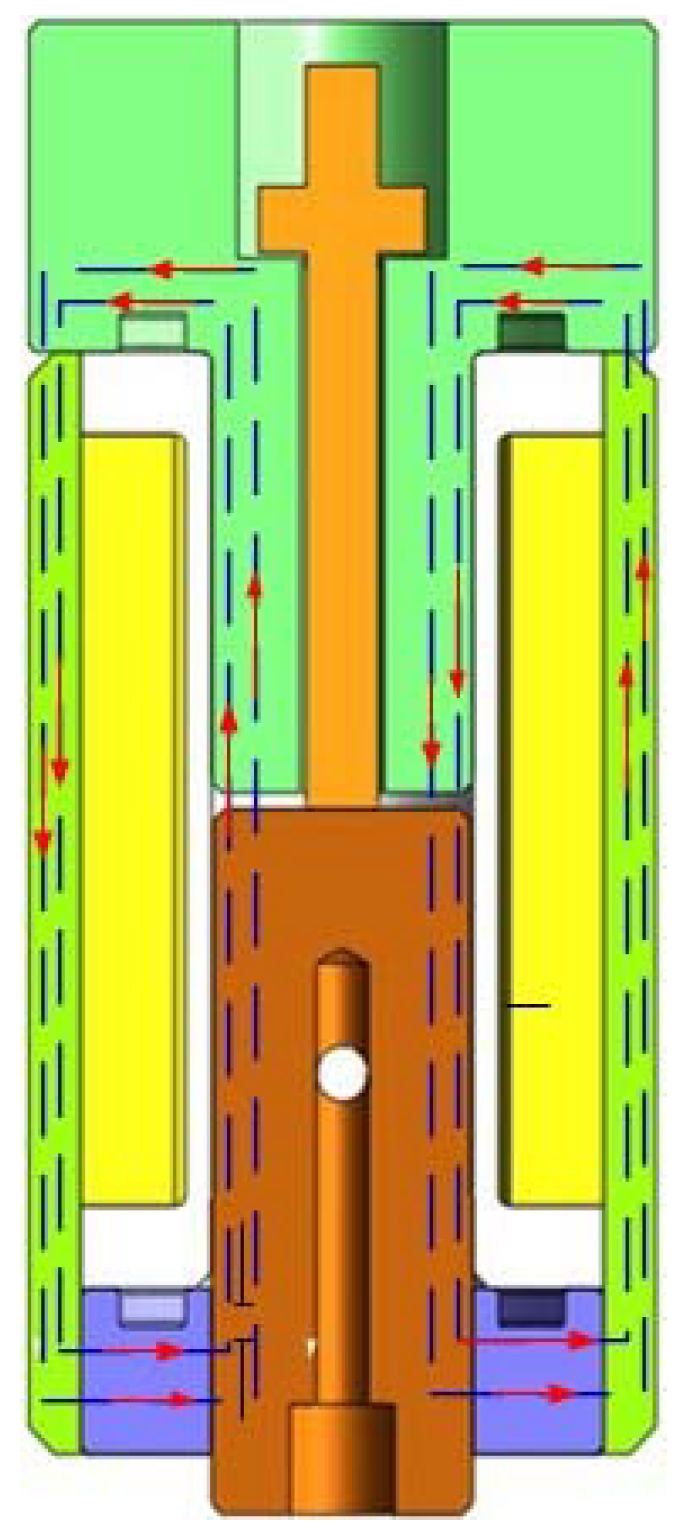
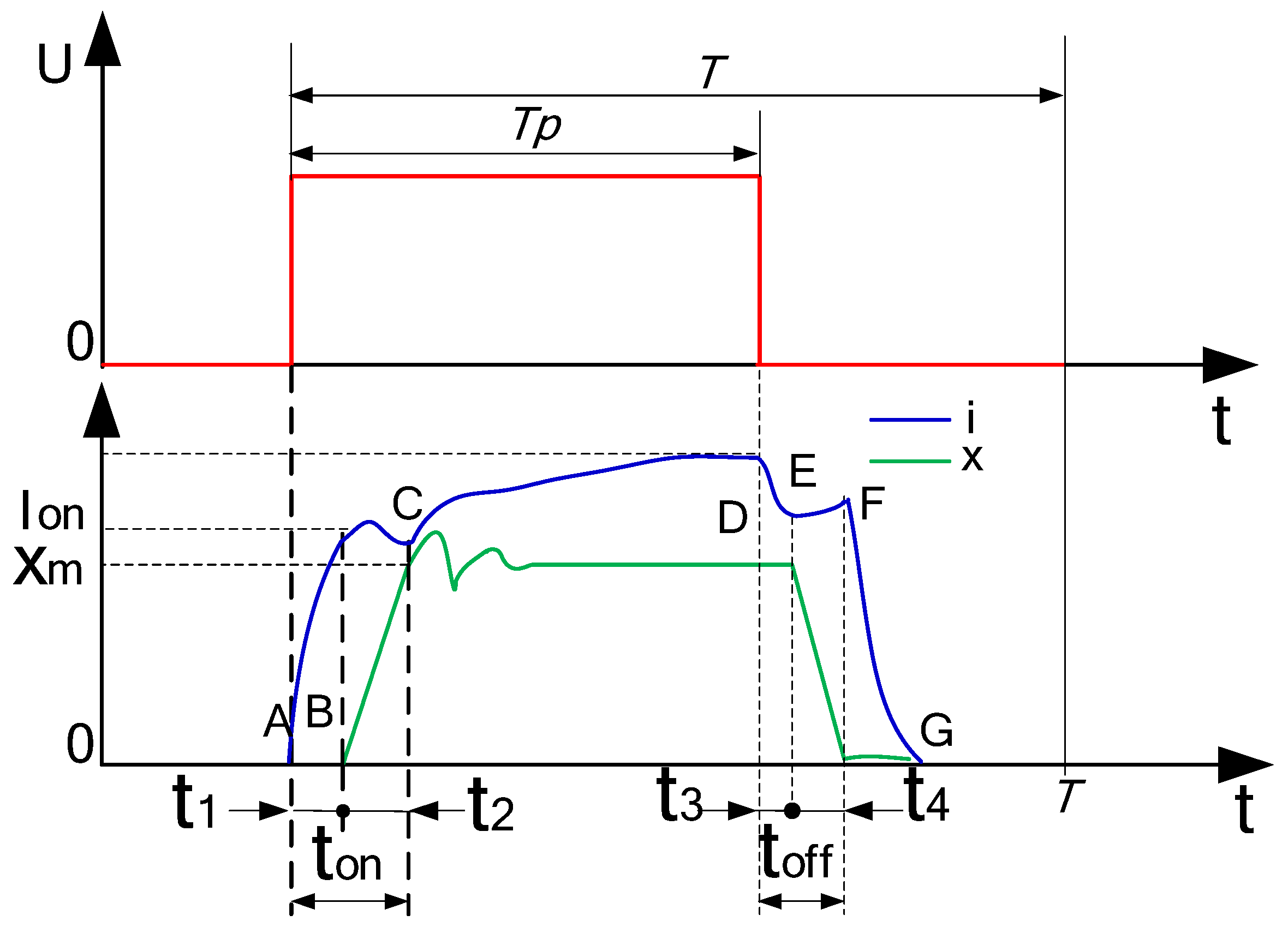
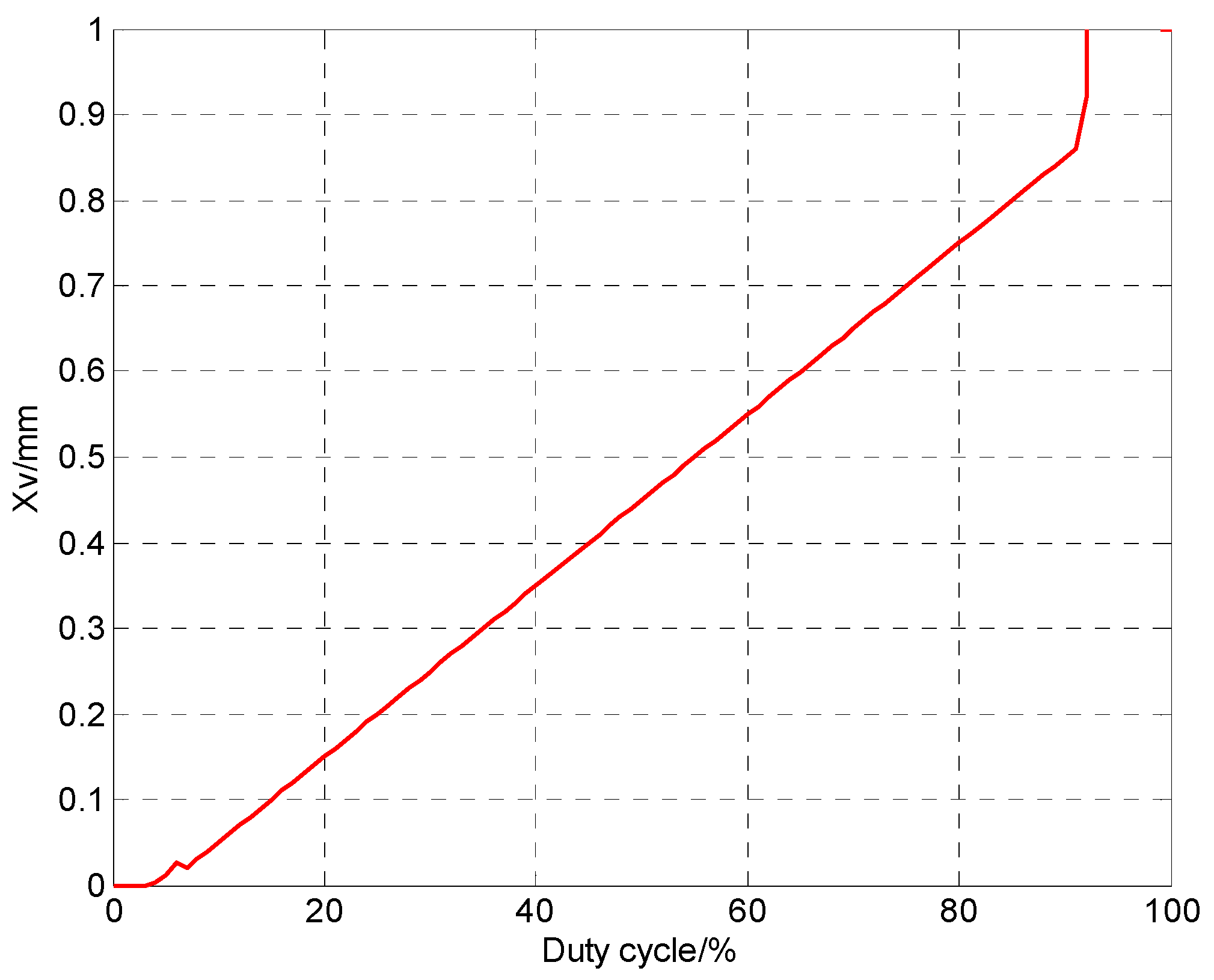


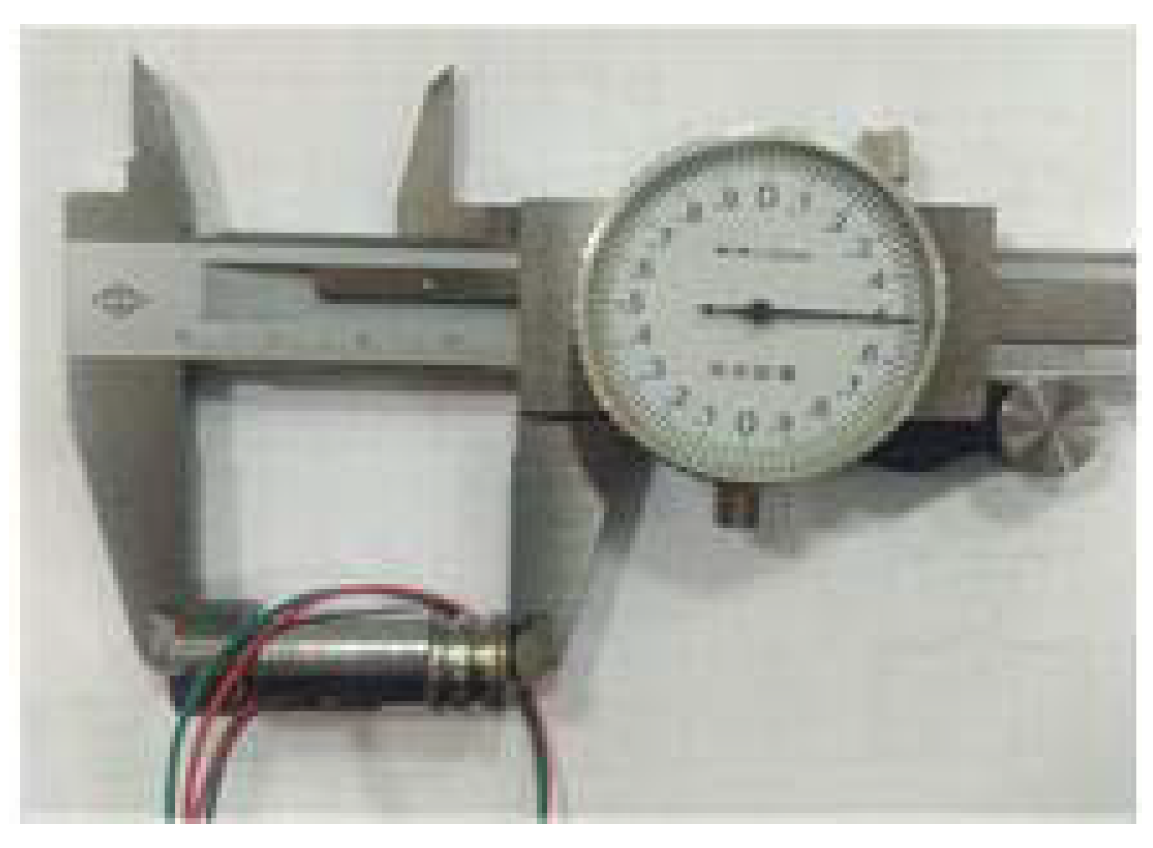
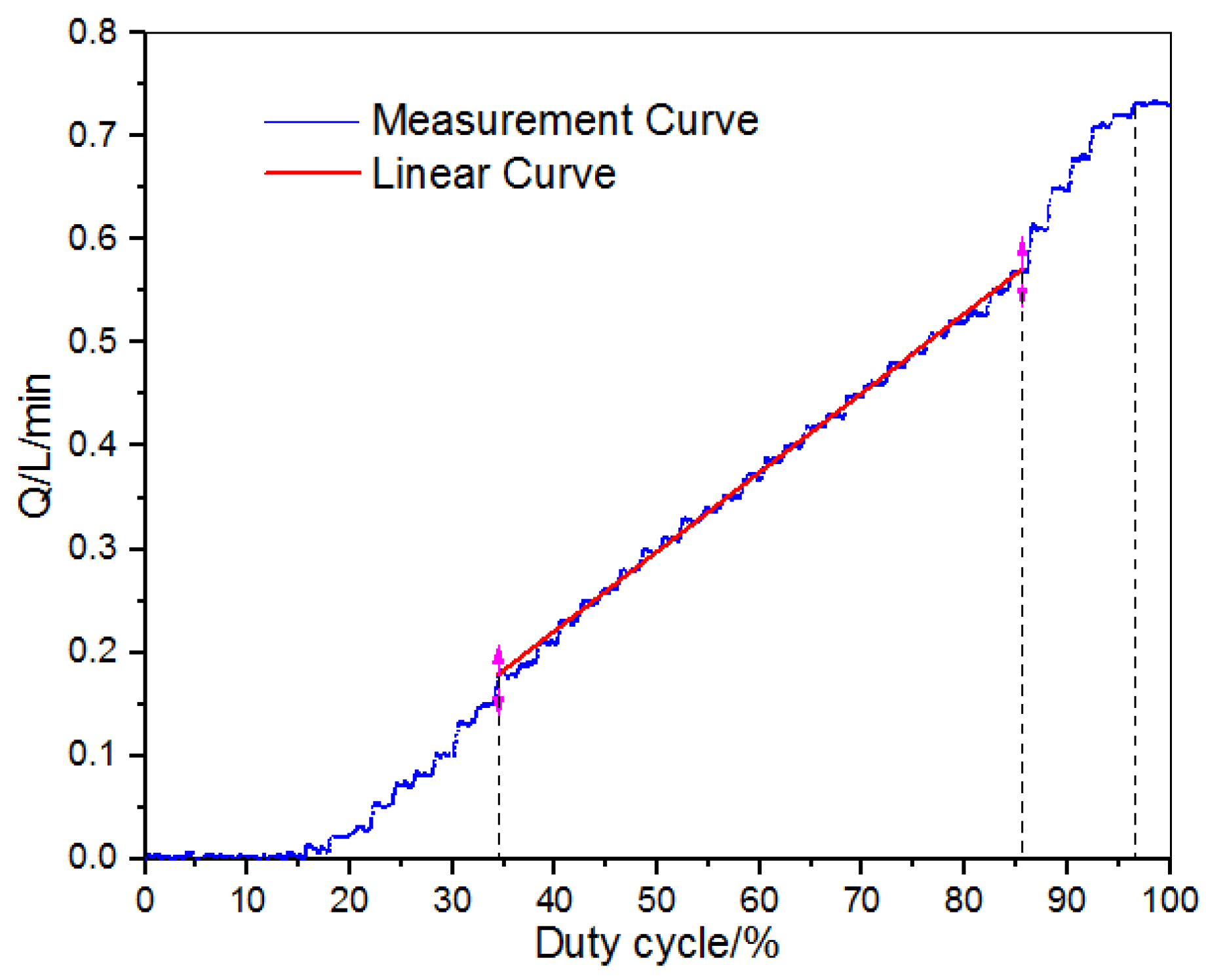
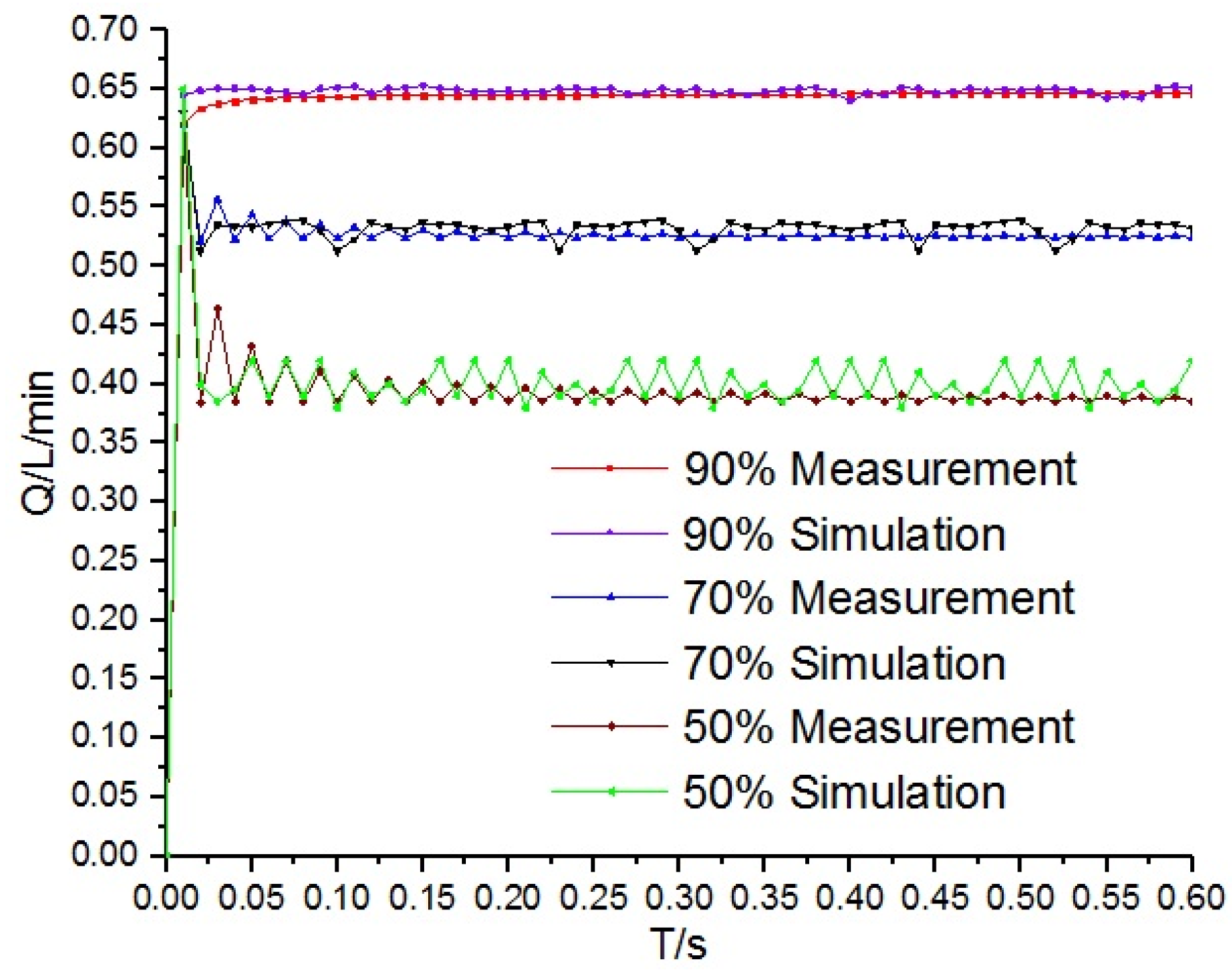
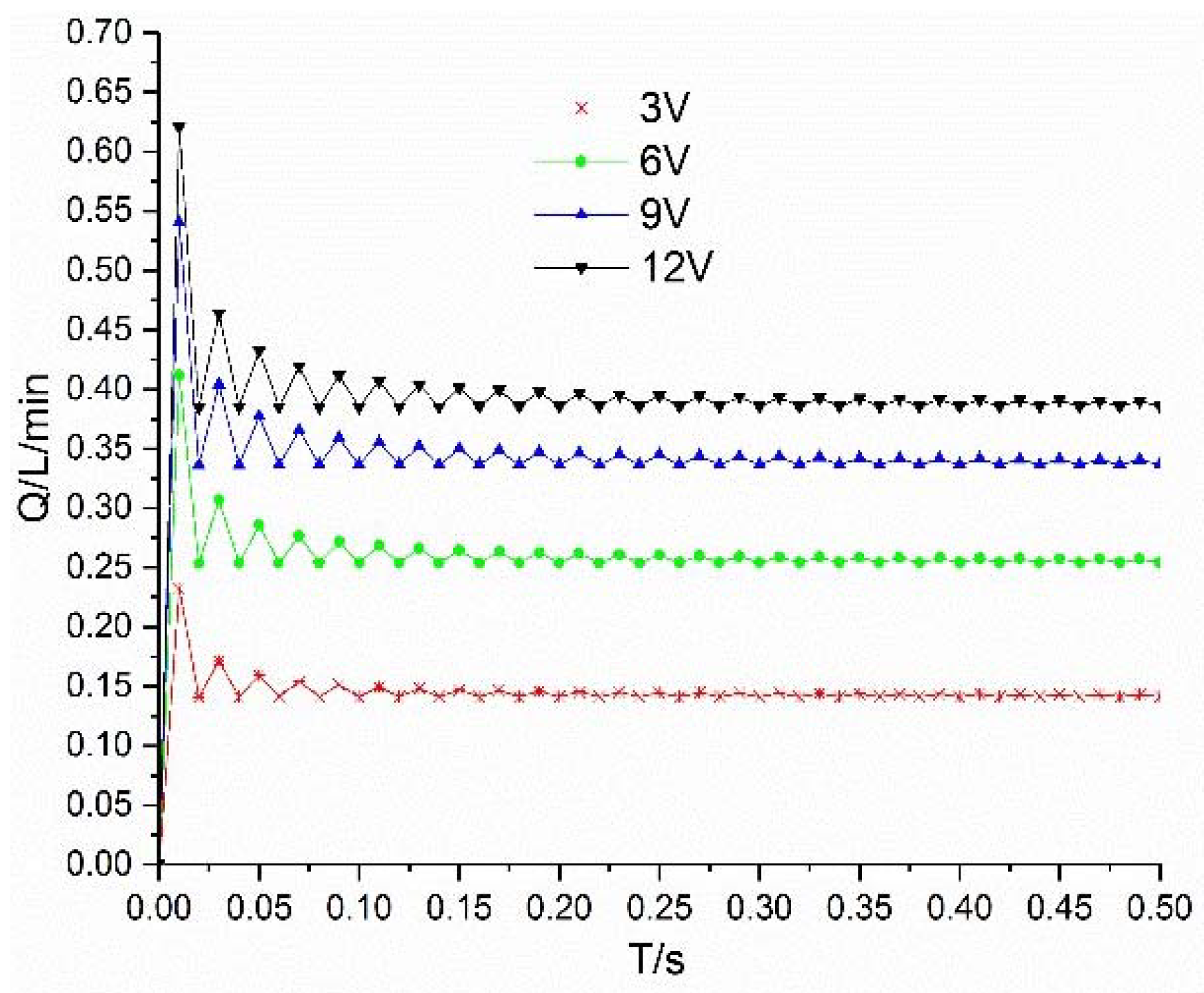

| Valve Type | Direct Operated Bistable Seat | Pilot Operated Seat | Direct Operated Bistable Spool | - |
| Valve Manufacturer | Tampere University of Technology | Tokyo Institute of Technology [17] | Sturman Industries [18] | - |
| Nominal Flow @3.5 MPa | 10 L/min | 6 L/min | 32 L/min | - |
| Max. Pressure Differential | 21 MPa | 14 MPa | n.a. | - |
| Size | 31 mm × 28.2 mm | 50 mm × 150 mm | 110 mm × 35 mm × 35 mm | - |
| Disadvantage | Complex Structure | Lower Pressure | Larger Size | - |
| Valve Type | Memory Alloy | Piezoelectric | Direct Operated Seat | Direct Operated Seat |
| Valve Manufacturer | Oak Ridge National Key Laboratory | Technische Universität Dresden | Tampere University of Technology | Zhejiang University |
| Nominal Flow @3.5 MPa | 10 mL/min | n.a. | 1.4 L/min | 2 L/min |
| Max. Pressure Differential | 0.5 MPa | n.a. | 21 MPa | 21 MPa |
| Size | 30 mm × 3 mm | n.a. | 35 mm × 10 mm | 45 mm × 20 mm |
| Disadvantage | Lower Pressure and Smaller Nominal Flow | Higher Voltage | Lower Reliability | Larger Size |
| Description | Dimensions and Parameters | Description | Dimensions and Parameters |
|---|---|---|---|
| Outer Diameter of the Valve | 12 mm | Number of Coil Turns | 300 |
| Length of the Valve | 36 mm | Diameter of Coil | 0.18 mm |
| Outer Diameter of the Coil | 10 mm | Air Gap Distance | 0.3 mm |
| Length of the Coil | 14 mm | Stiffness of the Spring | 12 N/mm |
| Resistance | 4.5 Ω | Diameter of Orifice | 0.5 mm |
| Voltage | 12 V | - | - |
| Part Name | Materials | Part Name | Materials | Part Name | Materials |
|---|---|---|---|---|---|
| Fastener | 316L | Coil | Copper | Magnetic Ring | DT4 |
| Spring | Stainless Steel | Spring Rod | 316L | Valve Seat | Cr12MoV |
| Spring Rod Seat | DT4 | Coil Former | 316L | Valve Cone | Cr12MoV |
| Valve Shell | DT4 | Valve Spool | DT4 | - | - |
© 2018 by the authors. Licensee MDPI, Basel, Switzerland. This article is an open access article distributed under the terms and conditions of the Creative Commons Attribution (CC BY) license (http://creativecommons.org/licenses/by/4.0/).
Share and Cite
Zhang, J.; Yang, M.; Xu, B. Design and Experimental Research of a Miniature Digital Hydraulic Valve. Micromachines 2018, 9, 283. https://doi.org/10.3390/mi9060283
Zhang J, Yang M, Xu B. Design and Experimental Research of a Miniature Digital Hydraulic Valve. Micromachines. 2018; 9(6):283. https://doi.org/10.3390/mi9060283
Chicago/Turabian StyleZhang, Junhui, Meisheng Yang, and Bing Xu. 2018. "Design and Experimental Research of a Miniature Digital Hydraulic Valve" Micromachines 9, no. 6: 283. https://doi.org/10.3390/mi9060283






